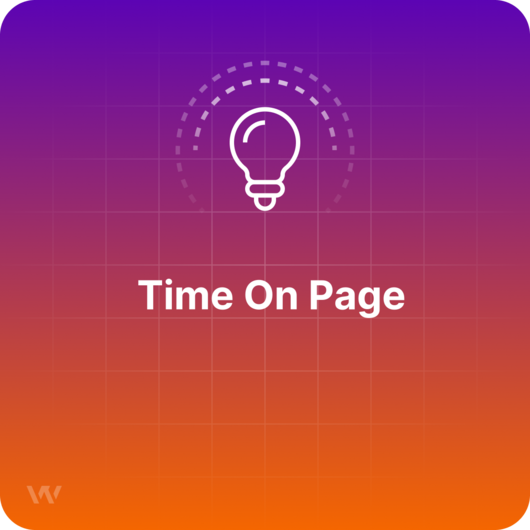Time on Page

TL;DR
The time-on-page represents a visit length in seconds, minutes or even hours and it helps a website owner understand how engaging the content on each page is and what should be optimized.
What is the Time-on-Page metric in your analytics dashboard?
The time-on-page for a web page refers to the time spent between the point when a visitor lands on the page and when they switch to another one. In comparison, Time on Site represents the time spent between landing on your website and leaving the website, not just a single page. So, when a visitor lands on a page, the timer starts, and it stops when the visitor clicks to another page. And then it starts again.
Please note that Time-on-page is highly important for both site success and site ranking in search engines. Not to be mistaken with Dwell time, that refers to time spent by a visitor from the moment they click on the search engine result page (SERP) until they go back to the search engine results page.
The time spent on page is easier to calculate from a technical point of view because the click to go to another page within the same website is the trigger that causes the time spent on the previous page to be calculated. Basically, it is easier to calculate the time between two actions on the same website, than calculating the first action and identifying the end of the visit if the user did not click within the same site to leave.
What is the difference between Time-on-Page and Average Time-on-Page?
While the time-on-page represents the start-to-end time of a visit, the average Time-on-Page is simply the average time spent by all visitors on a single page (or on your website, if you look at the average time on website)
Why is the Time-on-Page important for you and your site?
The time-on-page gives you good insight into how engaging your content is and how it is performing. To evaluate this metric correctly, set your expectations based on the type of content you have on each page (and you should also think about where you want people to go after they see your page). Here's why:
- If visit lengths are short, then your content is not engaging or relevant enough for the visitor.
- If you have a short landing page with a good offer, then the time spent there should be short.
- If you have a page with a lot of clean visuals and an insightful intro, then a short time spent there is not a problem, but something normal.
- If you have a blog with multiple amazing stories, you should have a higher goal in terms of time spent. So, people can consume the blog stories and site content in depth.
Make sure you have a fast website. If your pages load quickly, there is a higher chance your visitor will spend more time on your page. If the page is very slow, they will leave the site and page, most likely. On the other hand, if people spend a fair amount of time on your page or website, but take no action (sign up, purchase, etc.), then there might be an issue. Your content should help visitors perform the action you'd like them to, and if the time is too long and they do not take said action, the user experience is poor, or the content is not easy to understand.
If your bounce rate is high and the time-on-page is also high, then your visitor was looking for something they did not find. If the bounce rate is low and the time-on-page is high, then your visitor is truly engaged! Low time-on-site and high bounce rate mean that your visitor left very quickly because it was not interesting or they did not see what they had expected to.
To identify a good time-on-page, you should just look into your content. If it takes around 3m to read it, then this metric should be your goal.

